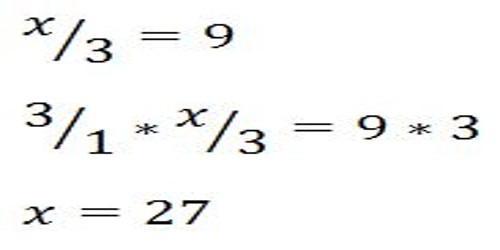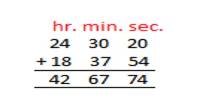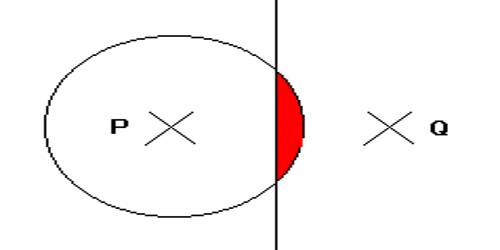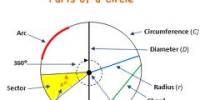Division equations are mathematical equations that involve the division operator. Division equations are useful not just in math class but also in our everyday life. For example, if we wanted to share a bag of candies evenly with our friends, we can use division to find our answer. Say we had 100 candies and 4 friends. To find out how many candies each person gets, we would divide 100 by 4. We find that our answer is 25, meaning that each friend gets 25 candies.
An equation is a mathematical statement such that the expression on the left side of the equals sign (=) has the same value as the expression on the right side. An example of an equation is 72 ÷ 8 = 9.
One of the terms in an equation may not be known and needs to be determined. The unknown term may be represented by a letter such as x. (e.g. x ÷ 8 = 9).
The solution of an equation is finding the value of the unknown x. Use the multiplication property of equations to find the value of x. The multiplication property property of equations states that the two sides of an equation remain equal if both sides are multiplied by the same number
Example:
x ÷ 5 = 2
x ÷ 5 * 5 = 2 * 5
x ÷ 1 = 10
x = 10
Check the answer by substituting the answer (10) back into the equation.
10 ÷ 5 = 2
Explanation:
For our problem, x / 5 = 10, we see that we have a division by 5 attached to our variable. The inverse operation here is multiplication. So, to detach the 5 from our variable, we need to multiply by 5 on both sides of the equation. Since we are dealing with equations, whatever we do to one side, we also must do to the other. So, we have (x / 5) * 5 = 10 * 5. This evaluates to x = 50. Our answer is 50, and we are done.
Division equations with 2 digit numbers
An equation is a mathematical statement such that the expression on the left side of the equals sign (=) has the same value as the expression on the right side. An example of an equation is 132 ÷ 12 = 11.
One of the terms in an equation may not be known and needs to be determined. The unknown term may be represented by a letter such as x. (e.g. x ÷ 12 = 11).
The solution of an equation is finding the value of the unknown x. Use the multiplication property of equations to find the value of x. The multiplication property property of equations states that the two sides of an equation remain equal if both sides are multiplied by the same number
Example:
x ÷ 50 = 20
x ÷ 50 * 50 = 20 * 50
x ÷ 1 = 1000
x = 1000
Check the answer by substituting the answer (1000) back into the equation.
1000 ÷ 50 = 20
Information Source:
















